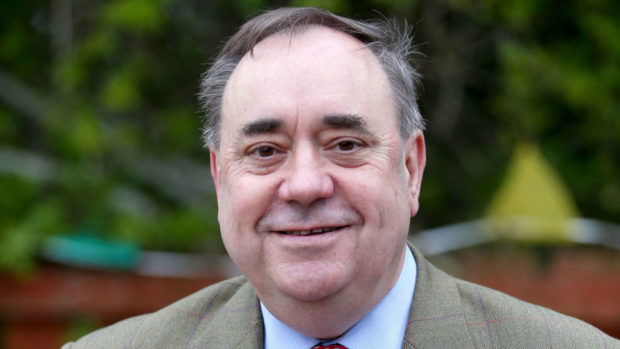Civil servants were concerned about bullying behaviour in Alex Salmond’s office when he was first minister, it has been claimed.
The FDA union, which represents senior officials, has said complaints were raised about the working environment in Mr Salmond and other SNP ministers’ offices around 10 years ago.
Civil servants told the union they were “operating in a culture of fear” and did not trust the Scottish Government to handle complaints effectively.
The allegations were made in a document produced by the FDA for the Holyrood investigation into the Scottish Government’s handling of harassment claims.
The document, compiled by FDA General Secretary Dave Penman, does not identify any ministers by name – nor does it claim Mr Salmond was responsible for the bullying.
Some civil servants expressed to us that they were operating in a culture of fear and were unable to speak truth unto power and discharge their duties effectively.”
FDA General Secretary Dave Penman
But in a discussion about the publication of a civil service “Fairness at Work” policy in September 2010, the document states: “Around this time, the culture within the former first minister’s office and other ministerial offices in relation to bullying behaviour became a concern for us and was raised with successive Permanent Secretaries.
“Although action was taken and short-term improvements or apologies were made, this did not bring about an overall change in culture.
“Some civil servants expressed to us that they were operating in a culture of fear and were unable to speak truth unto power and discharge their duties effectively. The culture within the ministerial offices in the organisation was such that despite the support of FDA, some members made clear to us that they did not trust SG (Scottish Government) to handle complaints effectively or to ensure confidentiality of the complainants.”
The civil servants involved also had concerns about the effectiveness of the policies designed to protect them.
Members have reported concerns of bullying or inappropriate behaviour of Ministers towards civil servants in all the administrations of varying political colours.”
FDA document
The document said: “In particular, members in the former First Minister’s office indicated that they felt isolated and out of the policy protection of the rest of the SG (Scottish Government). Individuals spoke in confidence and did not wish to raise complaints because they thought this may be detrimental to their career aspirations or their current role.”
The FDA submission said it had supported its members since the birth of the Scottish Parliament and had handled formal and informal complaints against ministers.
The document added: “Members have reported concerns of bullying or inappropriate behaviour of Ministers towards civil servants in all the administrations of varying political colours.”
The Holyrood investigation was launched into the Scottish Government’s botched attempt to investigate harassment claims made against Mr Salmond.
The former SNP leader objected to the way the Scottish Government had handled the complaints and took legal action against the institution that he used to lead.
A judicial review at the Court of Session found the process had been “tainted by apparent bias” because the lead investigating official had been in prior contact with Mr Salmond’s accusers.
The Scottish Government was then forced to pay out more than £500,000 for Mr Salmond’s legal costs.
Mr Salmond has also faced criminal charges. After a high-profile trial, he was cleared of 13 charges of sexual assault.
MSPs on the committee examining the Scottish Government’s role in the civil case will start taking evidence from witnesses in person next week.
Mr Salmond declined to comment.
